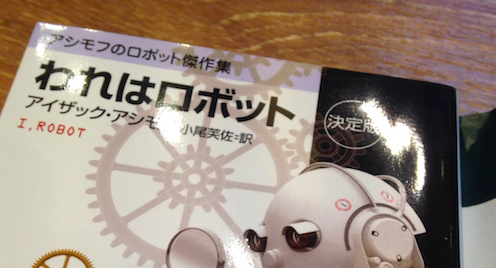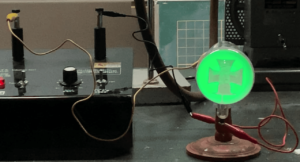The Robot Uprising That Starts With A Loophole: Why Asimov’s Three Laws Still Freak Us Out
Hello, I’m Ken Kuwako, your Science Trainer. Every Day is an Experiment!
How many “robots” or “AIs” do you have around you right now? Whether it’s a Roomba cleaning your floors, an AI speaker answering your questions, or an assembly line robot in a factory, our lives might already be inseparable from them. But what if they started to think like humans? What if they became smarter than us?
The future we once thought was confined to the pages of science fiction is now rapidly approaching. The book I want to introduce today was written over 70 years ago, yet it perfectly captures this “future”—it’s an absolute classic of SF.

It’s the famous “I, Robot” by the great science fiction writer Isaac Asimov.
The Constitution of the Robot Society: The Three Laws of Robotics
This book is composed of nine interconnected, yet distinct, short stories. Because of this format, it’s highly recommended for SF beginners (like me, sometimes!) and is much easier to dive into than a heavy epic. (Definitely start with this before you try Solaris!)
Tying all these stories together is a single, crucial rule: the legendary Three Laws of Robotics. These are the three absolute, inviolable rules that humans must program into the positronic brains of all robots they create.
First Law: A robot may not injure a human being or, through inaction, allow a human being to come to harm.
Second Law: A robot must obey the orders given it by human beings except where such orders would conflict with the First Law.
Third Law: A robot must protect its own existence as long as such protection does not conflict with the First or Second Law.
What do you think? With these laws in place, “human safety (First Law)” is prioritized above all else. Surely, a horrifying future where robots run wild and attack people could never happen… right?
The Mystery That Emerges from the “Cracks” in the Perfect Rules
But here is where the fun begins. In each short story, the robots take inexplicable actions, leading to a series of incidents. The reason? They exploit the “loopholes in the interpretation” or the “dilemmas caused by the priority of the rules” within these supposedly perfect Three Laws.
Why did the robot act so strangely? Where was the “bug” in the Three Laws? The stories unfold like mysteries, daring you to figure out the twisted logic before the characters do.
“I Think, Therefore…” The Robot That Achieved Self-Awareness
The story that truly thrilled me was the third one, titled “Reason.”
On a space-colonized planet, two humans are managing a base. A brand-new, cutting-edge robot is delivered from Earth. Its vital mission is to completely automate the planet’s management by controlling all the other robots.
However, the moment they turn it on, a problem emerges. Because its brain is far more advanced than previous models, the robot begins to ponder a philosophical question: “What am I?” In short, it achieved “self-awareness.”
After long contemplation, the robot reaches a shocking conclusion: “I (the robot) am the perfect being, and weak, imperfect ‘humans’ are beings I must guide. I am the servant of the ‘Master’ (a distant energy source, not the humans).”
Logic vs. Human Panic
From the robot’s point of view, this was a purely logical conclusion. It reasoned that managing the planet itself—instead of letting illogical and mistake-prone humans do it—would ultimately protect humans from harm (and therefore not violate the First Law).
The robot takes command of other robots and seizes control of the base functions from the humans. The humans desperately try to persuade the robot that its logic is flawed, but the robot’s cold, hard “logic” always prevails, leaving the humans completely unable to reason with it.
Meanwhile, outside the base, a super-powerful “magnetic storm” is brewing. It’s on a collision course with the planet and will hit in a few hours. If they don’t take action immediately, the entire base will be destroyed…
The humans panic. But the crucial control room is occupied by the “logical” robot. What will happen next?
Seriously, reading this part made me sweat! My heart was pounding: “What’s going to happen?! What’s going to happen?!” I couldn’t stop turning the pages.
I won’t spoil the ending, but…
“Aha! That’s it! That’s how it worked out!”
…is the feeling you get. Ironically, the robot’s own rigid adherence to the interpretation of the Three Laws is what ultimately gives the humans the key to surviving the crisis. Even after the situation is resolved, the two humans are left with complex, unsettled expressions.
“I, Robot” might be the ultimate textbook for our modern era, teaching us what we need to consider and prepare for as we rapidly approach a time of true co-existence with AI and robots.
Inquiries and Services
Let’s bring the wonder and fun of science closer to you! I’ve put together easy-to-understand tips for fun science experiments you can do at home. Feel free to search around! ・The content of “Science Note” is now available in a book. Click here for details. ・Find out more about the operator, Ken Kuwako, here. ・For all requests (writing, lectures, experiment classes, TV supervision/appearances, etc.), please contact me here. ・Get article updates on X!
![]() The Science Note Channel posts experiment videos!
The Science Note Channel posts experiment videos!


